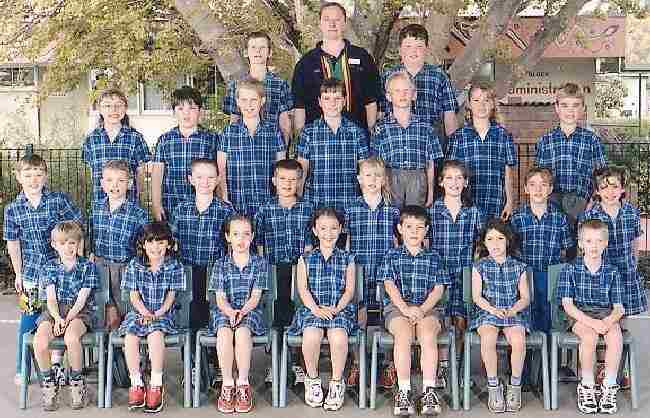
Figure 1.-- Australian primary schools have had a variety of uniform styles. At this schools the boys wore blue plaid shirts which matched the dresses that the girls wore. I'm not sure how common this was, but we have not seen it in other countries.


Figure 1.-- Australian primary schools have had a variety of uniform styles. At this schools the boys wore blue plaid shirts which matched the dresses that the girls wore. I'm not sure how common this was, but we have not seen it in other countries. |
I am not sure how Australian elementary children dresses for school in the 19th and early 20th centuries. I think that uniforms were generally not required, but have little information. Elementary children at state schools have generally wore shorts and knee socks to school since the 1920s. Many elementary schools currently require uniforms. Often the regulation is short pants in the summer and long pants in the winter. Often a sweater ("jumper") or sweat shirt is worn as part of the uniform. Blazers and ties are rarely required. Many secondary schools followed English dress standards through the 1950s. It was not uncommon for state secondary schoolboys to wear caps, ties, blazers, shorts, and knee socks. The academically selective grammar school tended to have the strictest dress codes as they often attempted to emulate the ethos of the English public school. This began to change in the 1950s and especially the 1960s. Some state secondary schools dropped uniform requirements all together. Most
retained a basic uniform. Currently uniforms continue to be common. Many schools have a summer and winter uniform. Often shorts are worn in the summer term. Some schools require knee socks, but many do not. The styles are currently much more casual than in earlier years. Open neck shirts are most common and ties are now rarely worn.
I am not sure how Australian elementary children dresses for school in the 19th and early 20th centuries. I think that uniforms were generally not required, but have little information. Elementary children at state schools have generally wore shorts and knee socks to school since the 1920s. I am not sure, however, just when state primary schools began requiring uniforms. I don't think it was until after World War II, but here we need more information. Many elementary schools currently require uniforms. Often the regulation is short pants in the summer and long pants in the winter. Often a sweater ("jumper") or sweat shirt is worn as part of the uniform. Blazers and ties are rarely required. We jave noted quite a few different styles worn at state primary schools. At the school seen here the boys wore blue plaid shirts which matched the dresses that the girls wore (figure 1). I'm not sure how common this was, but we have not seen it in other countries.
Many secondary schools followed English dress standards through the 1950s. It was not uncommon for state secondary schoolboys to wear caps, ties, blazers, shorts, and knee socks. The academically selective grammar school tended to have the strictest dress codes as they often attempted to emulate the ethos of the English public school. This began to change in the 1950s and especially the 1960s. Some state secondary schools dropped uniform requirements all together. Most
retained a basic uniform. Currently uniforms continue to be common. Many schools have a summer and winter uniform. Often shorts are worn in the summer term. Some schools require knee socks, but many do not. The styles are currently much more casual than in earlier years. Open neck shirts are most common and ties are now rarely worn.
Related Chronolgy Pages in the Boys' Historical Web Site
[Main Chronology Page]
[The 1880s]
[The 1930s]
[The 1940s/a>]
[The 1950s]
[The 1960s]
[The 1970s]
[The 1980s]
Related Style Pages in the Boys' Historical Web Site
[Main school uniform page]
[Main country page]
[Long pants suits]
[Short pants suits]
[Socks]
[Eton suits]
[Jacket and trousers]
[Blazer
[School sandals]
